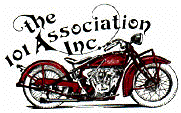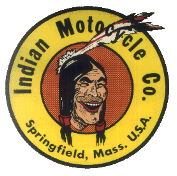No. I try to make it as simple as possible. Because of oils are of such inflamed and opinionated topic, I have to stress that this reply is my personal opinion.
Regarding longevity
The oil consumption system on the 101 does not bring the oil anywhere close to the longevity limits where the quality is of essence. The oil is rapidly consumed or vented out on the road with the 101 engine. The mineral oils commonly available on the shelves are of good enough quality so that the brand differences are not critical.
Regarding carbon deposits.
However apart from the stock base quality, some oils are depositing more residue and carbon than others, flash point of the oil is one factor of that. But that is a data not commonly shared on the bottle so mainly try and error has to be practised. Pure synthetic oils or blends can show a better result than some plain mineral oils, regarding this. Carbon deposits is a troublesome factor when large piston clearances and poor piston rings are used. Our 101 flateads runs hot and burns oil in the combustion chamber.
A dollop of a quality 2 stroke oil for air cooled engines, in the petrol tank now and then might keep the carbon at bay because those oils have a detergent additive that infuse the deposits and makes that burn off. Marine, water cooled and snowmobile 2 stroke oils are many times designed for a too cold combustion temperature to be beneficial in our engines. I have heard people run only plain 2 stroke oil in the oil tank, reportedly with no problem.
Regarding viscosity.
Viscosity does have some importance depending on what clearance is used between the piston and lining. In our flatheads with a piston clearance of .006" or larger, I believe a viscosity of 40 is good to use. A higher viscosity oil is leaving a thicker layer of oil on the surface. The difference is measured in microns, tenths of thousandths of a millimeter. However a thicker oil does not mean the engine runs cooler, it is the other way around because oil is slow at collecting heat!
Roller bearings in the crank, and the cam rollers are not the least better off with high viscosity oils, rather the contrary but the bushings in the cam compartment and gear gaps to a degree benefit from a thicker oil because of the cushion effect a thicker oil will make, mostly for the simple reason of sound emerging. It is the same with sound of piston slap in the cylinder when cold.
The debate about single vise-versa multi viscosity oils is topics is a non-issue in my opinion if above 10W-X if the pump is so tight it can keep the oil from leak down to the sump. The standard rating of viscosity is complicated, stupid and outdated. I don't go in depth more than say that 15W-50 has the same viscosity as straight 50 oil at 100 deg.C. but flows much easier at 20deg.C
If anything multi viscosity is better just because the oil is always fed cold from the tank to the engine and multi viscosity oil flows lighter when cold. However, the flow in and out of the 101 pump is so slow that it never will cause any cavity or starving issues in summer temperatures even with thick 60-oil. It is different in winter when a much lighter oil has to be used.
Regarding additives.
Another example is the infected debate about zink additives is a non issue as the Indian engine does not have any friction areas where the amount of ZZDP would be critical. More important is the flash point and film strength/shear stability, but that's going in the pit bog of brands, types and categories of oils.
People regularly bring up the question about detergent/non-detergent oils, but virtually all oils commonly available have additives where the dirt and impurities are kept suspended in the oil. You have to be very specific in searching and finding a non detergent oil today and such an oil is wearing the engine down faster than normal. With our engines without a oil filter of any sorts, the dirt better be suspended and transported out of the engine with the oil.


